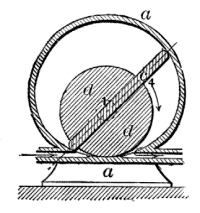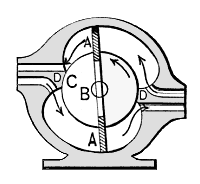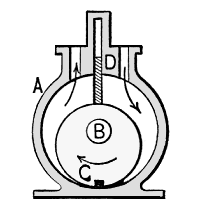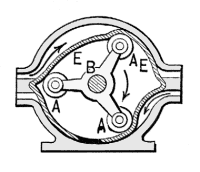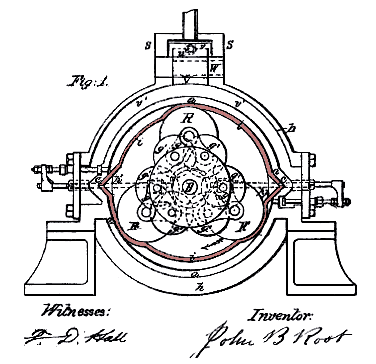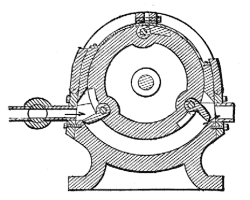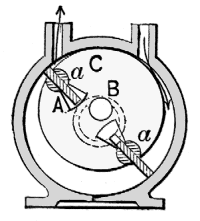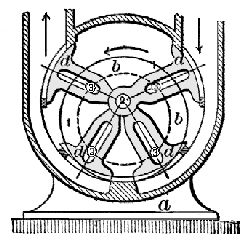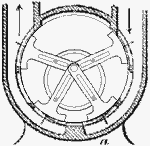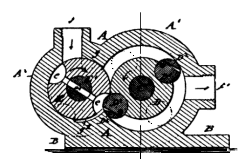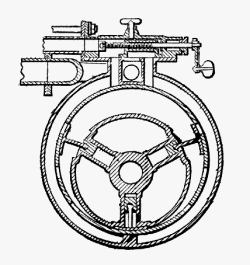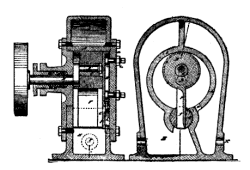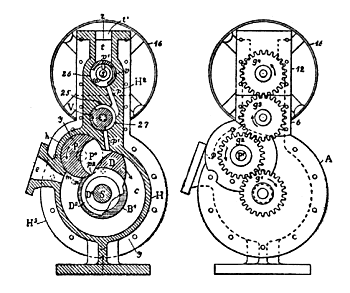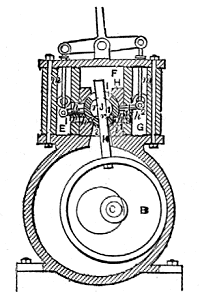The rubber bag is here coloured pink.
If nothing else, this is a brave attempt to solve the sealing problems of rotary engines, but it seems unlikely that it would work for long, especially at the high speed that would be needed to make it a worthwhile engine for directly driving dynamos.
Note that this engine is actually rather more complicated than Hiscox's sketch implies. The three piston rollers are actually carried on friction rollers g',g' that permit the spacing of the piston rollers from the central axis to be varied. It is not clear from the patent what the purpose of this is, but it is probably to allow the pressure of the rollers on the rubber bag to be adjusted to get good sealing.
The box s,s on top of the casing is the steam chest; it contains a sliding valve that allows reversing by switching the inlet ports.
It is not a well-drafted patent. For example, the function of the horizontal sliding rods is not explained.
Drawing from US patent 14,778, 29 April 1856






